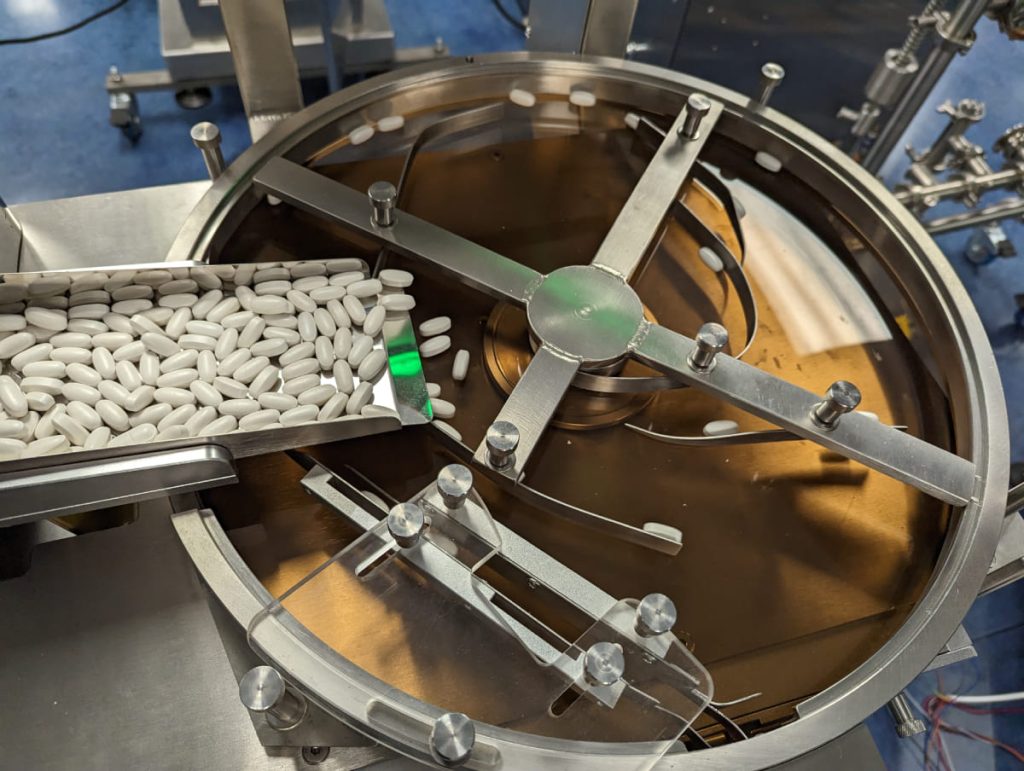Did you know that up to one in every 20 medication doses in the US could be inaccurate, often due to manual counting errors?
Ensuring patients receive the correct medication dosage is critical in pharmacy practice. Inaccurate tablet counts can lead to serious health consequences, impacting medication adherence and potentially causing adverse reactions.
Studies show a significant portion of medication errors stem from counting manually in pharmacies.
This blog post will teach pharmacists essential strategies to safeguard patients from medication mishaps.
Explore common pitfalls of counting manually and provide actionable tips to ensure accurate and safe medicine packaging.
Common Mistakes and Prevention Strategies
Now, let us help by explaining common mistakes and strategies to prevent them in detail.
- Distraction and Fatigue
The Pitfall: The fast-paced environment of a pharmacy can be rife with distractions such as phone calls, customer inquiries, and interruptions from colleagues. Even a momentary lapse in focus can lead to miscounting tablets, potentially delivering an incorrect dose. Studies have shown that fatigue can also significantly increase the risk of errors in repetitive tasks like counting.
The Prevention
- Minimize Distractions: Carve out a dedicated space for medication counting, free from interruptions. Silence phones or utilize notification settings that minimize distractions.
- Schedule Breaks: Plan regular breaks throughout the day to combat fatigue. Even short breaks can help refresh focus and maintain accuracy.
- Utilize Technology: Consider using barcode scanners for medication verification, when available, to reduce the need for manual label examination and minimize potential distractions.
- Similar-Looking Tablets
The Pitfall: Pharmacies often stock medications with similar shapes, sizes, or even colors. Confusing these medications can lead to dispensing errors with potentially serious consequences.
The Prevention
- Double-Checking is Key: Develop a habit of double-checking the medication against the prescription label every single time. Pay close attention to imprint codes and unique identifiers printed directly on the tablet. Utilize good-quality magnifying glasses if necessary for a closer look.
- Lighting Matters: Ensure adequate and well-distributed lighting in your counting area. This will allow for better visualization of tablet details, minimizing confusion between similar-looking medications. Consider using task lighting specifically designed to enhance visual clarity.
- Standardized Procedures: Implement clear and standardized procedures for handling look-alike medications within your pharmacy. This could include specific verification protocols or requiring a second pharmacist to verify high-risk medication counts. Or you can use the best filling machines for your products.
- Math Errors
The Pitfall: Even the most meticulous pharmacist can make a simple math error, especially when dealing with high dosages or complex prescriptions. These errors can have significant consequences for patient safety.
The Prevention
- Double the Count: Make double-counting a standard practice, especially for high-dose medications or when dispensing controlled substances. Encourage colleagues to implement the same practice as a multi-layered safety net.
- Counting Tools: Utilizing counting aids like tally sheets, counting trays, or a tablet counting machine. These tools can help pharmacists visually track the count and minimize the risk of mathematical errors.
- Technology Integration: Explore pharmacy software solutions that offer features like automated dispensing or built-in dose calculation tools. These can significantly reduce the risk of human error during the counting process.
- Improper Counting Techniques
The Pitfall: Improper scooping or pouring techniques can lead to inaccurate counts. Scooping tablets with a medication vial neck can result in undercounting, while overflowing a scoop can lead to over-dispensing.
The Prevention
- Calibrated Scoops: Invest in calibrated scoops designed for specific medication types and dispense volumes. These filling machines ensure consistent and accurate measurement, minimizing the risk of under or over-counting.
- Dispensing Tools: Utilize calibrated dispensing tools, especially for high-dose or powdered medications. These tools provide a more controlled and accurate method of dispensing compared to free pouring.
- Gentle Handling: Practice proper handling techniques to avoid damaging tablets during counting. Chipped or broken tablets can be difficult to count accurately.
- Documentation Errors
The Problem: Inaccurate documentation can have serious consequences, leading to discrepancies between the dispensed medication and the recorded amount. This can create confusion and potentially compromise patient safety.
The Prevention
- Double-Check Documentation: Double-check all documentation against the tablet count before finalizing the dispensing process. This final verification step ensures consistency and minimizes the potential for documentation errors.
- Standardized Documentation: Implement standardized documentation procedures within your pharmacy. This could include clear labeling practices and consistent abbreviations to minimize misinterpretations.
- Electronic Records: Consider utilizing electronic dispensing systems where available. These systems can automate documentation and reduce the risk of human error associated with handwritten records.
Tips for Pharmacist
- Invest in Automated Tablet Counting Machines
While counting manually can be sufficient for low-volume pharmacies, please consider the numerous benefits of utilizing automated tablet counting machines, including:
- Reduced Errors: Automated filling machines significantly minimize the risk of human error inherent in counting manually. These machines precisely count tablets using sophisticated technology, eliminating the possibility of miscounts due to fatigue, distraction, or similar-looking medications.
- Increased Efficiency: Automation streamlines the dispensing process, allowing pharmacists to dedicate more time to patient consultations and other crucial tasks. This can significantly improve overall pharmacy workflow and productivity.
- Improved Accuracy: Automated machines offer superior accuracy compared to manual counting. This translates to ensuring patients receive the correct medication dosage, which is a critical factor in patient safety and medication adherence.
- Reduced Costs: While purchasing an automated machine requires an initial investment, the long-term benefits can outweigh the costs. Increased efficiency, reduced errors, and minimized waste can contribute to overall cost savings for the pharmacy.
Conduct a thorough cost-benefit analysis to determine if an automated machine suits your pharmacy needs.
Even with automation, maintaining safe medication dispensing practices remains paramount:
- Standardized Procedures
Implement clear and well-defined procedures for manual and automated medication counting within your pharmacy. These procedures should outline proper handling techniques, verification protocols, and documentation guidelines.
- Communication and Teamwork
Encourage open communication among pharmacy staff. Double-checking each other’s work, especially for high-risk medications, adds an extra layer of safety and helps catch potential discrepancies.
Conclusion
Accurate medicine packaging is the cornerstone of safe and effective patient care. Plus, it saves time and effort.
Accutek Packaging Equipment offers a range of automated tablet counting and filling machines for pharmacies seeking a significant leap in accuracy and efficiency. These state-of-the-art solutions minimize human error, streamline workflows, and ensure consistent, precise medication dispensing.
Consider contacting Accutek today to explore how their customizable tablet counting machine can empower your pharmacy to deliver the highest level of patient care.
Whether you require a semi-automatic bench top counter for smaller volumes or a high-speed automatic system for larger operations, Accutek has the perfect solution to meet your specific needs.
Invest in the safety and well-being of your patients with Accutek’s innovative tablet counting technology.



